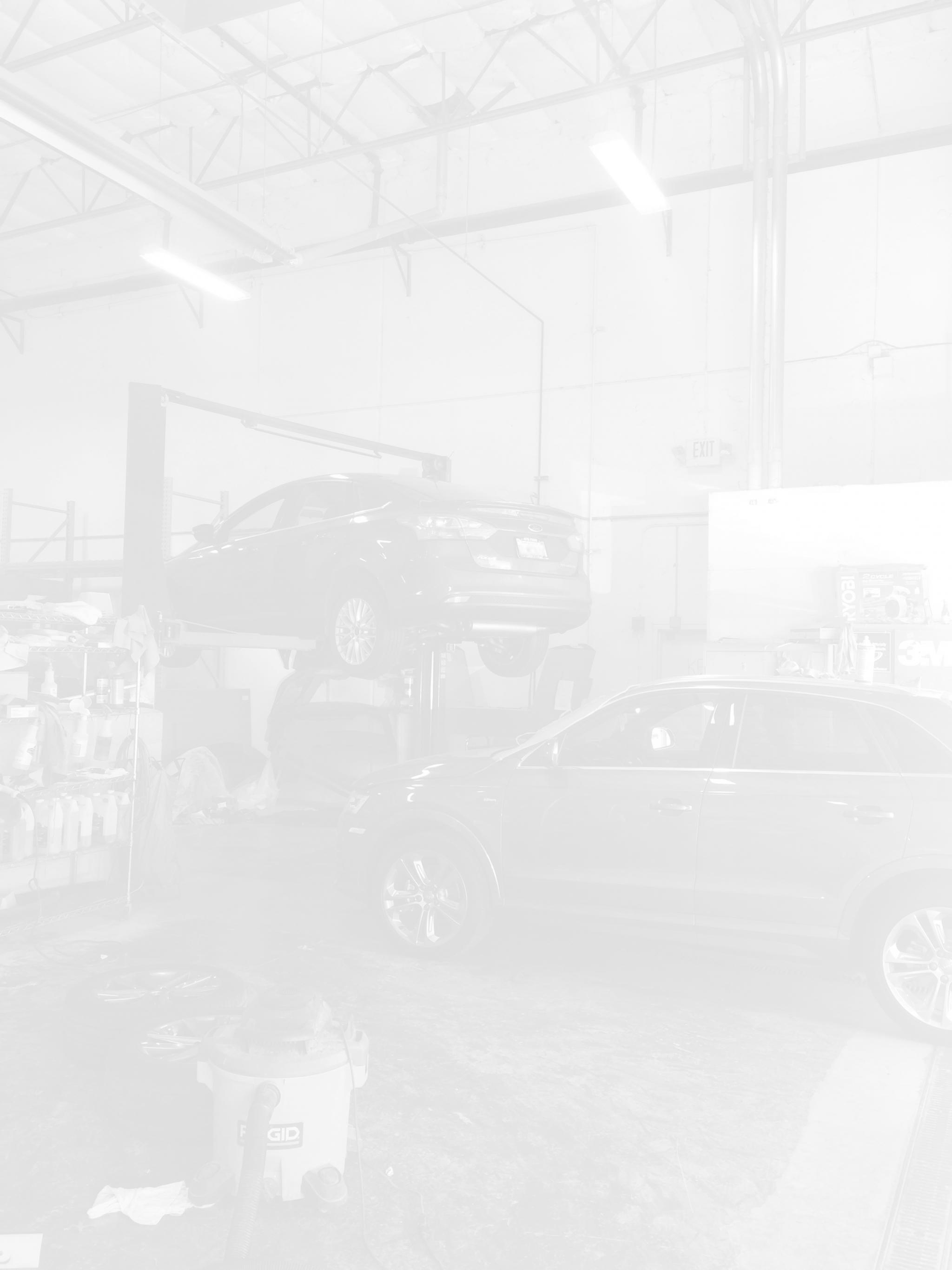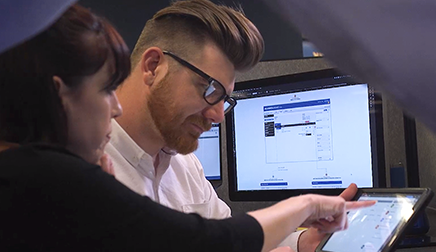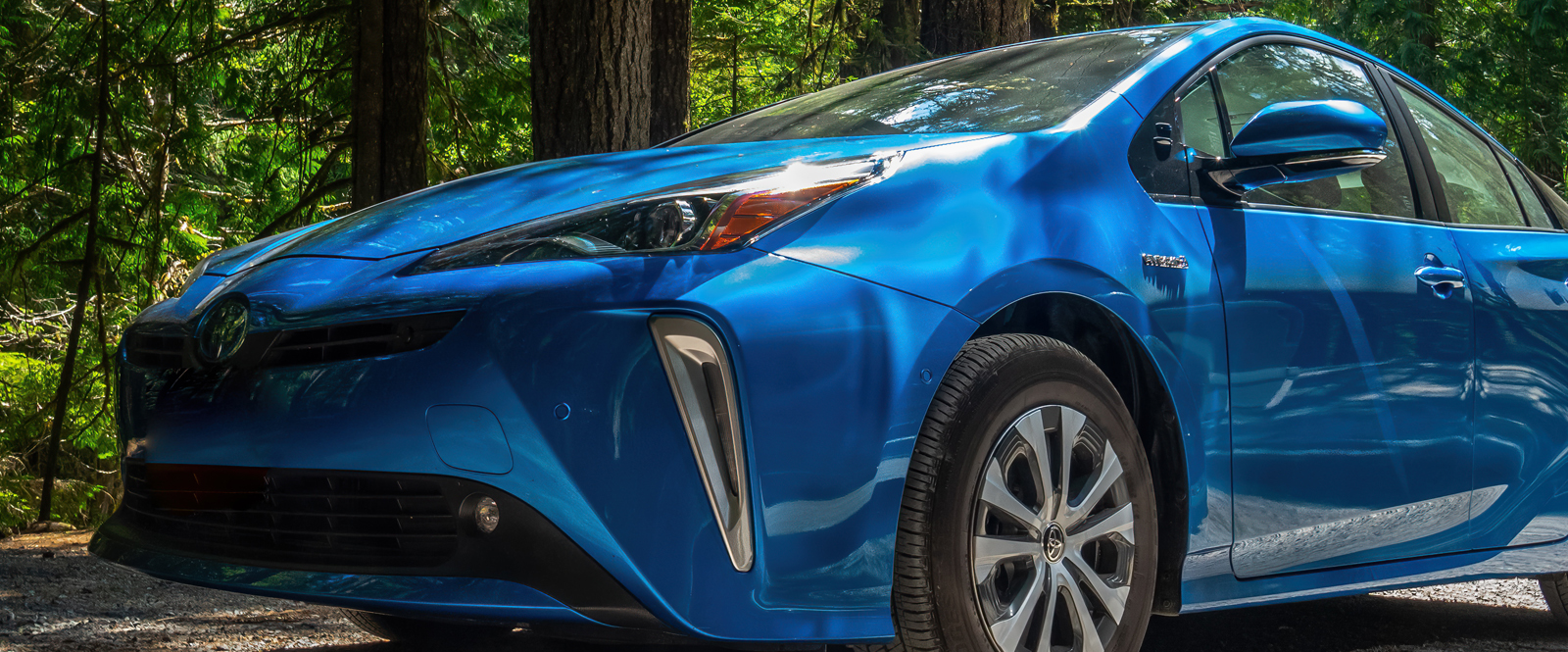
Disposing HV Batteries
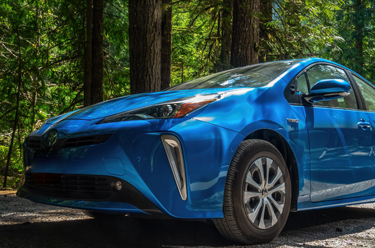
What happens to a hybrid or electric vehicle’s high-voltage (HV) battery or battery pack at the end of its life? Do they get recycled or tossed into a landfill?
The good news is, HV batteries can be recycled, but you must do so using explicit steps and safety procedures. In 2010, Toyota was the first manufacturer to establish a comprehensive Nickle Metal Hydride (NiMH) battery recycling program in the U.S. A similar recycling program had already been available in the company's home base of Japan since 1998. In 2019, they expanded their recycling efforts to include Lithium-ion (Li-ion) batteries.
Fast forward to June 2022. Toyota announced a partnership with Tesla co-founder J.B. Straubel's Redwood Materials to create a sustainable, closed-loop battery ecosystem for its electrified vehicles.
As part of its commitment to reduce the company’s environmental footprint year after year and achieve carbon neutrality by 2050, Toyota embarked on a mission – one that focuses not only on the collection, testing and recycling of batteries into raw materials to feed the supply chain, but also aims to develop second-life opportunities for remanufactured and repurposed Toyota hybrid and electric vehicle batteries.
Redwood Materials has also recently formed partnerships with Ford, Toyota, Volkswagen, Audi and Volvo to collect and recycle end-of-life batteries from their electric vehicles. The goal is to make electric cars more sustainable and affordable.
Disposing of HV Batteries
The nickel metal hydride and lithium-ion batteries found in EV and hybrid vehicles are basically "zero-landfill" products. The materials that can't be recycled are consumed in the recycling process.
Although hybrid battery packs are a fraction of the size of EV batteries, the recycling process is the same. First, there are the cells, which are by far the priciest part of any HV battery. The cells contain lithium, nickel, aluminum, manganese, cobalt and other common metals that can be reused to manufacture new battery packs. Steel, copper and iron go into a nationwide metal-recycling program. Plastics can be more difficult to recycle, but they tend to make up only a small portion of HV battery packs.
There are inherent dangers associated with the lithium-ion battery recycling processes including electrical, chemical, and thermal dangers, and potentially hazardous material interactions.
Dealers, independent repair shops and auto recyclers remove batteries from hybrids and EVs and send them to special facilities where the batteries can safely be recycled. Companies leading the domestic battery recycling industry report current HV battery material recovery rates of 95–98 percent. Even with the high recovery rates, it’s not yet a profitable business in all cases, but industry analysts and venture capitalists expect battery recycling to grow exponentially as the auto industry ramps up the production and sales of hybrids and EVs.
Safety
There are inherent dangers associated with the lithium-ion battery recycling processes including electrical, chemical, and thermal dangers, and potentially hazardous material interactions. Water sensitivity complicates matters as lithium hexafluorophosphate, an electrolyte material, reacts with water to form hydrofluoric acid. Cells are often immersed in a solvent to prevent this. Once the cells are separated and the materials are removed by ultrasonic agitation, the electrodes are ready for melting and recycling. To recycle an HV battery, several steps are combined into a complex process that also emphasizes safety.
These steps are:
- Deactivation or discharging of the battery
- Disassembly of battery systems
- Mechanical processes (includes crushing, sorting, and filtering processes)
- Electrolyte recovery
- Hydrometallurgical processes
- Pyrometallurgical processes
HV Lithium-ION Battery Recovery Inspection
When disposing of HV batteries or supply stack sub-assemblies, make sure to follow the manufacturer’s removal instructions and guidelines, and adhere to all safety precautions. ALLDATA Repair or Collison are both reliable resources for this kind of information.
To ensure a trouble-free HV battery and supply stack return, route them through an authorized collection agent who is capable of handling them properly and safely.
After HV batteries or supply stacks are carefully removed from the vehicle, a recovery inspection is necessary before safely transferring them to a collection agent. Here is a noteworthy example of a manufacturer’s lithium-ion battery recovery inspection procedure.
Recovery Inspection Procedure
2021 Toyota Corolla Hybrid (Source: ALLDATA Collision®)
To return the HV battery safely, it may be necessary to discharge it. The following pre-return inspection procedure can be used to determine whether it’s necessary to discharge the HV battery and the method that may be required.
CAUTION:
- Before returning the HV battery, make sure to perform a pre-return inspection.
- Accidents such as electric shock may result if the HV battery is discharged improperly and disposed or abandoned.
- Make sure to return the HV battery through an authorized collection agent.
- To reduce the risk of fire, HV batteries must not be stored in an area where they will be exposed to fire or high temperatures.
- If the temperature of the HV battery is high, let it cool down.
1. Inspect for Electrolyte Leak
CAUTION:
Be sure to wear insulated gloves and protective goggles. Position the HV battery as shown in the illustration and leave it for 5 minutes.
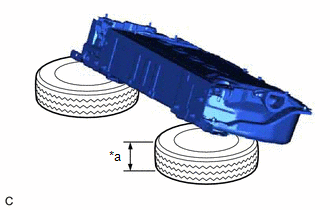
a. Distance *a = 155 mm (6.10 in.) or more
b. Check that no electrolyte is leaking from the HV battery.
OK: There is no electrolyte leaking from the HV battery.
CAUTION:
Perform this procedure in an area where the HV battery will not be exposed to fire. Do not touch the HV battery, unless absolutely necessary, as electrolyte may be leaking.
NOTICE: If there is an electrolyte leak, make sure to wear insulated gloves and goggles and clean it using a piece of clean cloth. Do not leave electrolyte-contaminated cloths unattended. Dispose of them according to law or local regulations.
Result:
OK - Continue to next step
NG - Discharge using a saltwater solution
2. Check for DTCs
a. Check the previously recorded DTCs which resulted in replacement of the HV battery.
| Result | Proceed to |
|---|---|
| DTC record not available. | A |
| The HV battery was replaced due to a reason other than the DTCs listed below. | B |
| The HV battery was replaced due to one of the DTCs listed in the following: P1A6017, P31AA17, P0C3000, P31B300, P1C7D49 | C |
A - Continue to next step. (step 3.)
B - Go to step 5.
C - Go to step 6.
3. Check HV Battery Voltage
CAUTION:
Be sure to wear insulated gloves.
a. Measure the voltage according to the value(s) in the table below.
Standard Voltage:
| Tester Connection | Condition | Specified Condition |
|---|---|---|
| A-B | Always | Below 233.8V |
CAUTION:
Make sure not to cross the probes of the electrical tester.
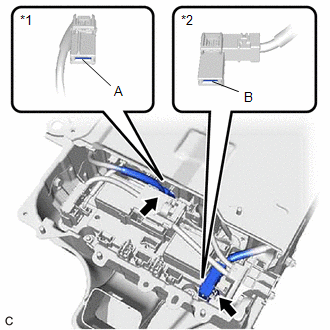
| *1 | No. 1 HV Battery Main Cable (A) |
| *2 | No. 1 HV Battery Main Cable (B) |
Result:
OK - Continue to next step. (step 4.)
NG - Go to step 6.
4. Insulation Inspection of HV battery
CAUTION:
Be sure to wear insulated gloves.
Using a megohmmeter set to 500 V, measure the insulation resistance according to the value(s) in the table below.
NOTICE: Be sure to set the megohmmeter to 500 V when performing this test. Using a setting higher than 500 V can result in damage to the component being inspected.
Standard Resistance
| Tester Connection | Condition | Specified Condition |
|---|---|---|
| A - Battery Outer Case | Always | 1 MΩ or higher |
| B - Battery Outer Case | Always | 1 MΩ or higher |
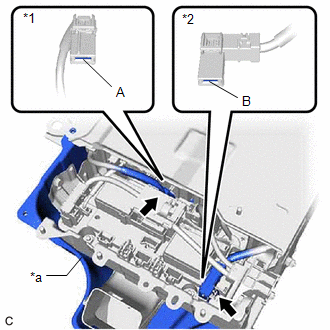
| *1 | No. 1 HV Battery Main Cable (A) |
| *2 | No. 1 HV Battery Main Cable (B) |
| *a | Battery Outer Case |
Result:
OK - Continue to next step. (step 5.)
NG - Go to step 6.
5. HV Battery Visual Check
CAUTION:
Be sure to wear insulated gloves.
a. Check that the HV Battery is not deformed or damaged.
OK: The HV battery is not deformed or damaged.
Result:
OK - Return HV battery
NG - Go to step 6.
6. HV Battery Connectors Visual Check
CAUTION:
Be sure to wear insulated gloves.
a. Check that the orange connectors connected to the battery ECU assembly are not deformed or damaged.
OK: The connectors are not deformed or damaged.
IMPORTANT: If any of the connectors are damaged, a Li-ion battery discharger will not be able to be connected to the HV battery. Soak the HV battery in a saltwater solution to discharge it.
Result:
OK - Discharging (Using the Li-ION battery discharger)
NG - Discharging (Using a saltwater solution)
Look at our entire suite of products to determine your shop’s needs.
If you would like to read more articles like this one please subscribe to ALLDATA News.
About the author
Rich Diegle, Supervisor of the ALLDATA Tech-Assist Team, has 35 years of experience as a master automotive technician, marketing and public relations manager, senior automotive editor, and instructor.
